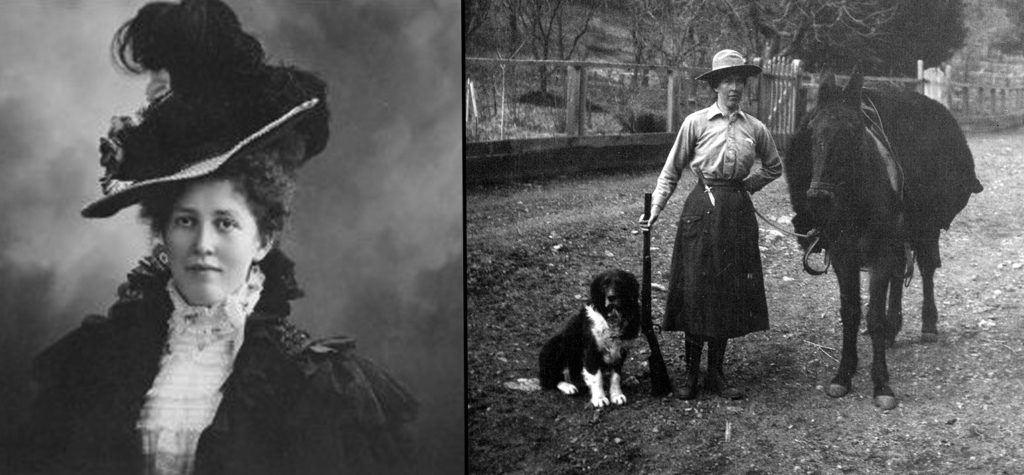The Forest Service Faces a Century-old Call for Equality
The following opinion piece by FHS historian James Lewis was originally published by High Country News on April 30, 2018, and is republished here in its entirety.
The third applicant was “no gentleman,” the U.S. Forest Service ranger wrote to his boss, but would still make a first-class fire lookout on the remote Klamath National Forest. He thought little of the first applicant’s abilities, and the second had poor eyesight, though that didn’t prevent him from frequently violating the local game laws. Yet the third candidate was so unusual, ranger M.H. McCarthy cautioned, “I hope your heart is strong enough to stand the shock.”
For the shocking third applicant was a woman, Hallie Morse Daggett, though McCarthy added that she “is absolutely devoid of the timidity which is ordinarily associated with her sex.”
McCarthy told his supervisor not to worry about being overrun by female applicants in the future “since we can hardly expect these positions to ever become very popular with the Fair Sex.” What is telling in light of recent news about the systemic problem of discrimination throughout the Forest Service is that this was written 105 years ago.

Hallie Morse Daggett, the first woman fire lookout, served for fifteen years. McCarthy’s faith in Daggett proved justified. She was one of the most effective lookouts on the Klamath National Forest, typically reporting fires before others did. Of the approximately forty fires she reported that first season, fewer than five acres burned.
Women—and minorities, too—have long struggled to be accepted as equals in the Forest Service, an agency traditionally led by white males at all management levels. Thirteen years ago, I wrote The Greatest Good and The Forest Service: A Centennial History, which included a chapter about what women working in the Forest Service had achieved and what obstacles they continued to face in the agency. If I were writing that chapter today, what I then called “New Faces, Changing Values” would now be titled “New Faces, Same Old Values.” It seems that all that has changed is the names of those involved in incidents, and not the misogynistic behavior.
There have always been notable exceptions, of course, women who made their way with the help of their male colleagues, as in the cases of the first female smokejumper, Deanne Shulman, and of Geraldine Bergen Larson, the first female forest supervisor.
Too often, though, it’s been like what their contemporary Gene Bernardi, a research sociologist in the California region, encountered in 1973. When a hiring manager preferred to wait for a male applicant to be available rather than hire her, she complained, garnering compensation but not the job. Fed up, she and other women then filed a class-action lawsuit in California over sexual discrimination. In the end, after years of litigation and negotiation, the Forest Service consented to hire more women and minorities in the region.
Fifty years before that agreement in California, a group of Forest Service female employees met with agency leaders, including Chief William Greeley, to discuss how the agency could “make working conditions pleasant” for women. In 1924, they told leaders how to do so in no uncertain terms. According to the meeting minutes, a “Miss Peyton” observed:
The first summer after I came to the Service a group of freshly-graduated students arrived from one of the forest schools, painfully young, immature looking, and inexperienced, to such an extent indeed, as to cause quite a number of facetious remarks at their expense, one young forester going so far as to remark that they looked too young to be out without their mothers. That’s the way their fellow workers viewed them and gibed them. Then suddenly something else caught and held my attention. The heads of the Service evidently saw those boys from some different angle. The Service didn’t see mere boys. It saw potentialities. It was not looking at the present. It visioned the future.
In other words, don’t denigrate new employees for their lack of experience. Let them work to gain experience and judge them on ability. Asking that women be afforded the same treatment, she went on:
Their history might in fact be written to a large extent in four words: No responsibilities, no experience. And the result? … What has happened to them might easily be indicated in three fateful words: Unused faculties atrophy. Think of it — (they’re) retrograding instead of developing! … Now, reverse the picture, and thereby get a glimpse of these same women as an army of well-developed trained workers. How great the gain!
Ten years after Gene Bernardi filed suit, a Forest Service employee noted, “Given the Forest Service’s traditional values, it’s a big step to open up the organization to women and minorities. It’ll take time, but we’re getting there.”
Today, 35 years later, after Forest Service Chief Tony Tooke resigned amid charges of sexual misconduct, and with the agency’s employment practices once again deservedly under scrutiny, the agency appears far from “there.”
It’s time to heed the advice offered nearly a century ago by Miss Peyton: Look at people for their potentialities, not their gender or skin color. Vision this future.

